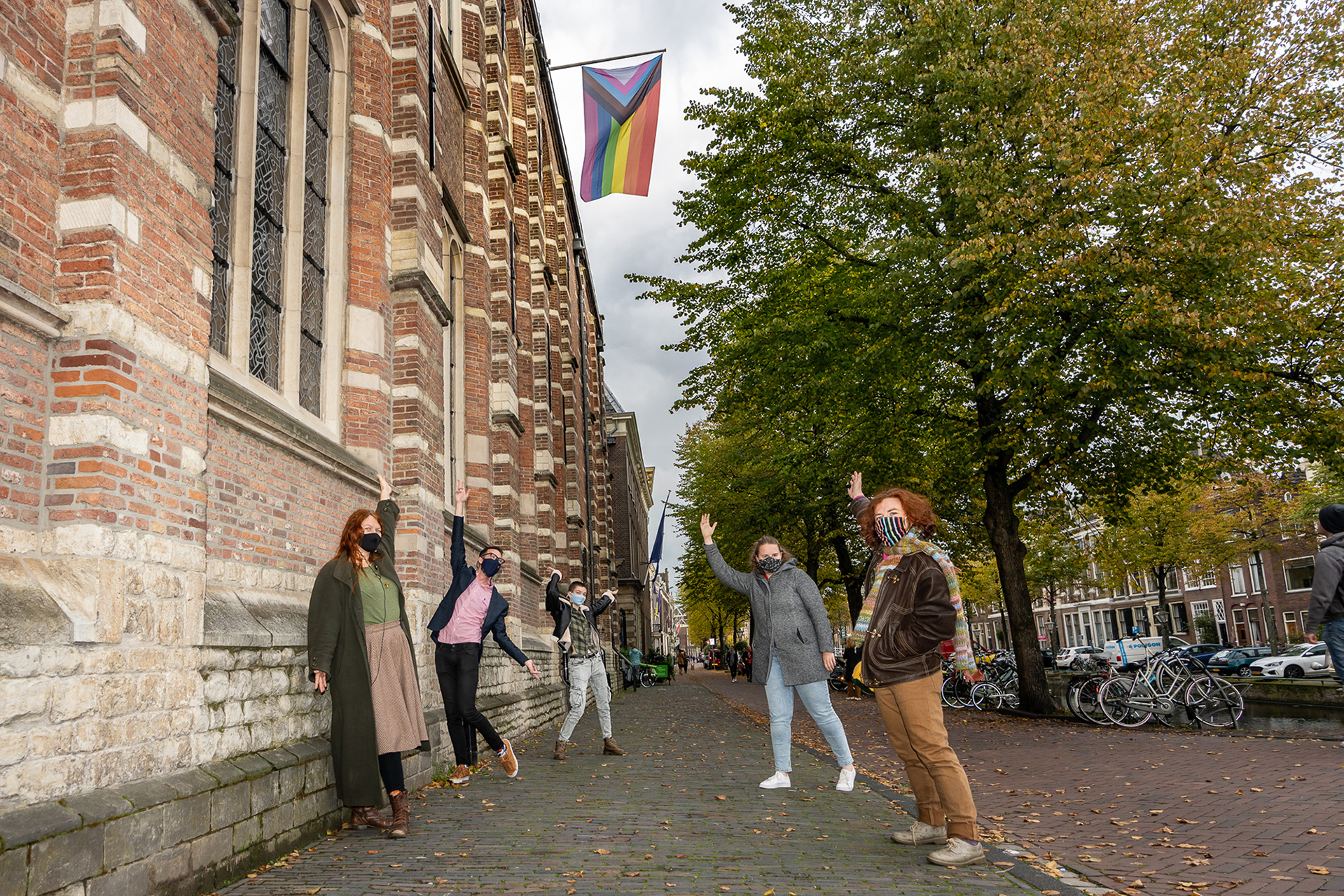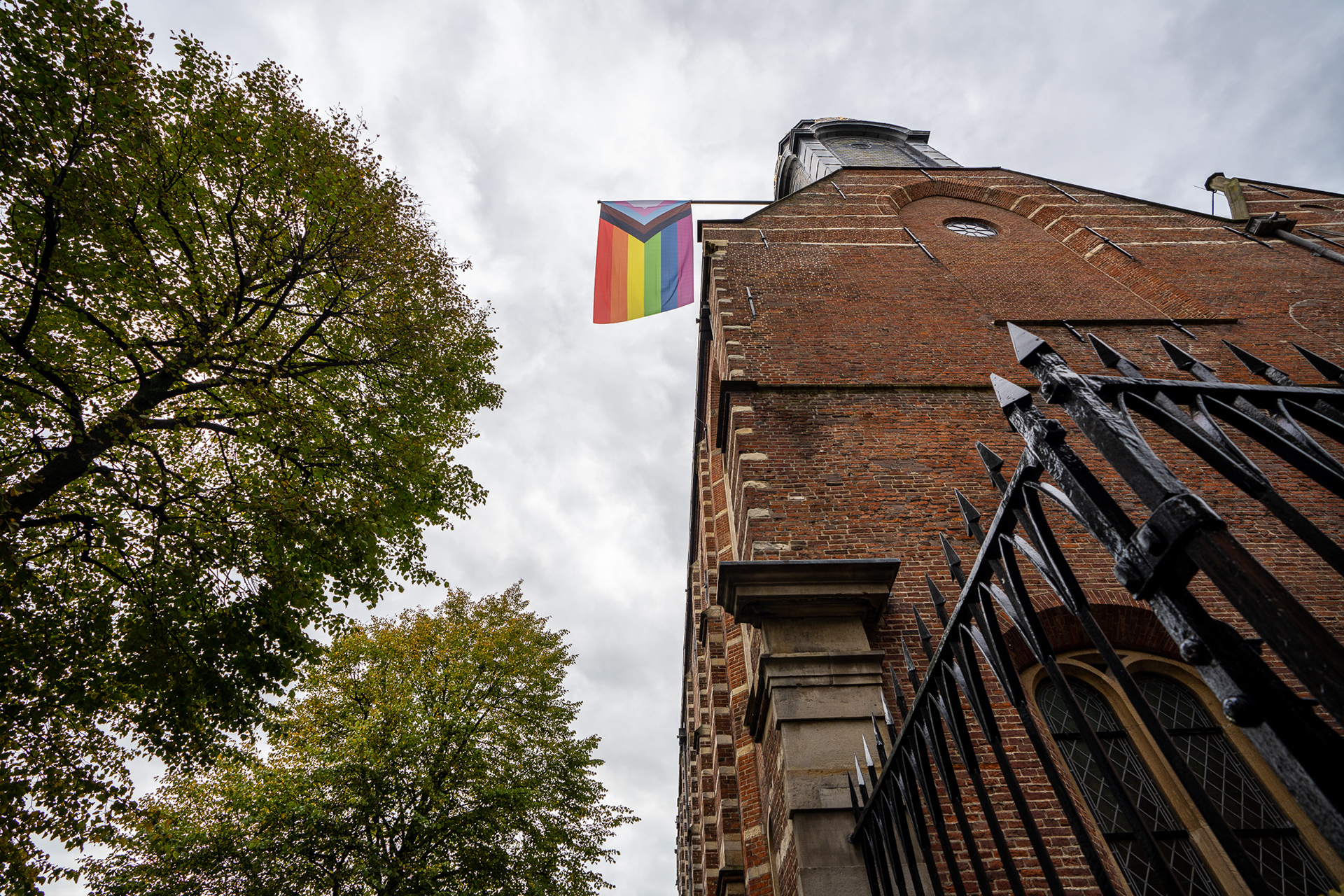
New ‘progress pride flag’ flying on annual Coming Out Day
It is still not easy to ‘come out’ about your sexual orientation or gender identity. On Coming Out Day (11 October), the issue was the focus of global attention. This year, instead of the traditional rainbow flag, the ‘progress pride flag’ flew above University buildings.
The new flag, that flew on seven University buildings during the weekend of 9 to 11 October, is an initiative of the LGBT+ Network at Leiden University. The new flag has 11 bands of colour, five more than the traditional rainbow flag that has been the symbol of the LGBT+ rights movement for decades.
The flag was designed several years ago by American designer Daniel Quasar, and the aim was to focus more attention on inclusion and progress in the LGBT+ rights movement. Three of the five new bands (pink, turquoise and white) emphasise the important historical and contemporary contributions that trans, including non-binary and gender non-conforming, people have had within the movement.
-

-

-

Andrew Shield, chair of the LGBT+ Network Leiden. -

-

Brown and black bands have also been added to symbolise the relationship between the emancipation of the LGBT+ community and the fight against racism. ‘In the Netherlands, many within the LGBT+ community are also closely involved in the Black Lives Matter movement,’ says Andrew Shield, Chair of the LGBT+ Network in Leiden. ‘And, within the Dutch LGBT+ movement, many activists are people of color or people with migration background. Our aim with this flag is to emphasise the overlap and affinity between these movements.’
‘The progress pride flag will be raised on a number of significant days throughout the 2020-2021 academic year,’ Shield says. ‘This way, we are focusing attention on racism and transphobia, issues that also affect Leiden students and staff. For many students, this will be the first time that they have seen this kind of flag flying at their institution. The message it gives them is that Leiden University is committed to promoting inclusion in and outside of the classroom.’
